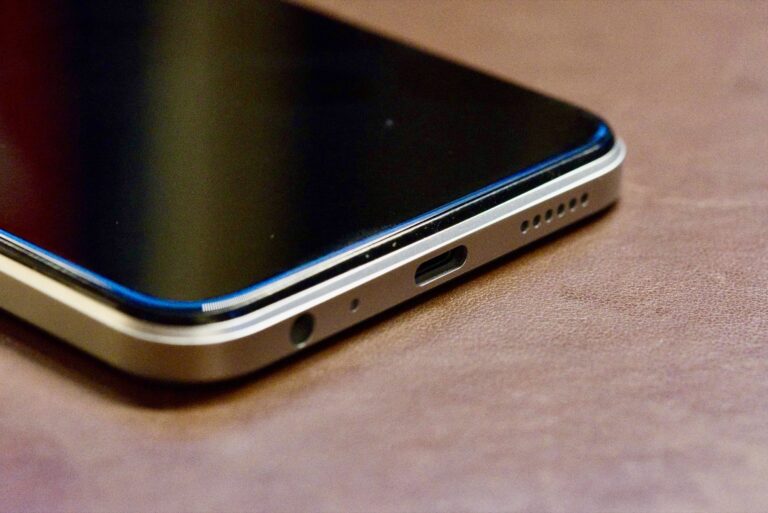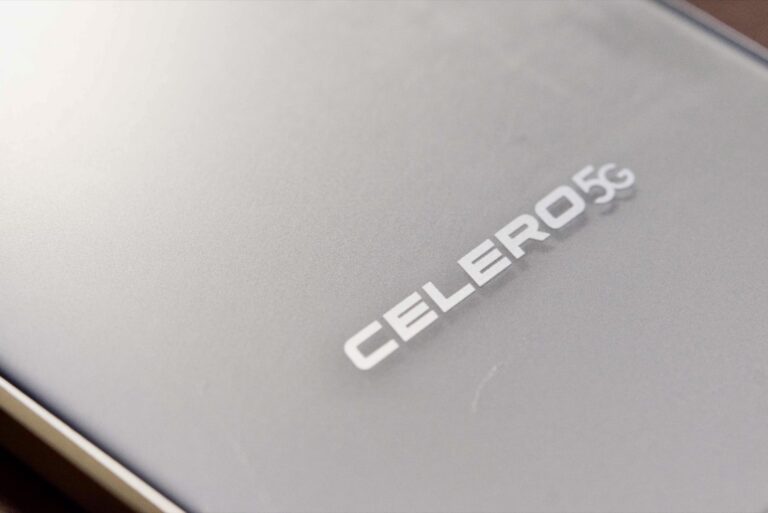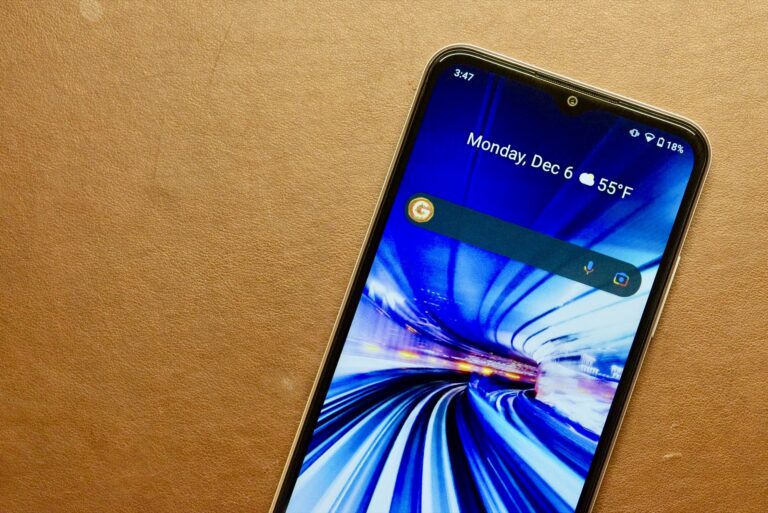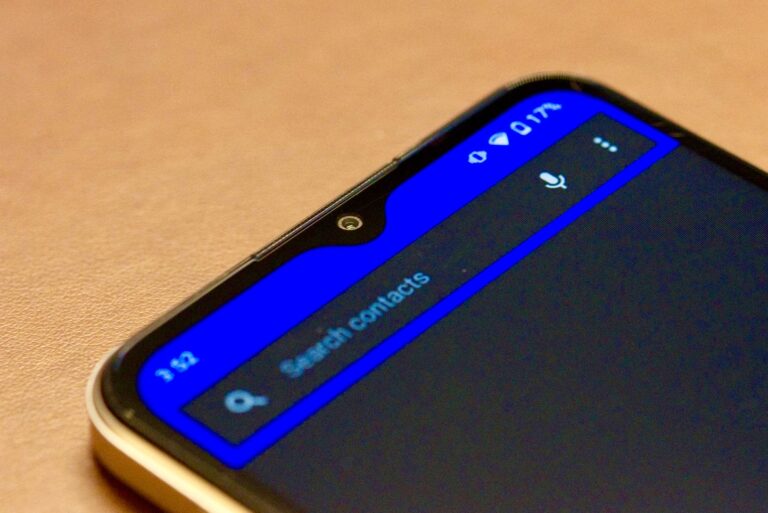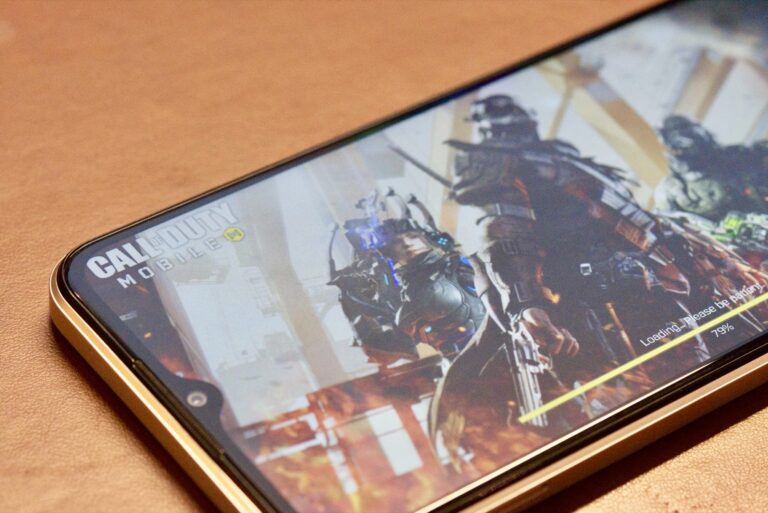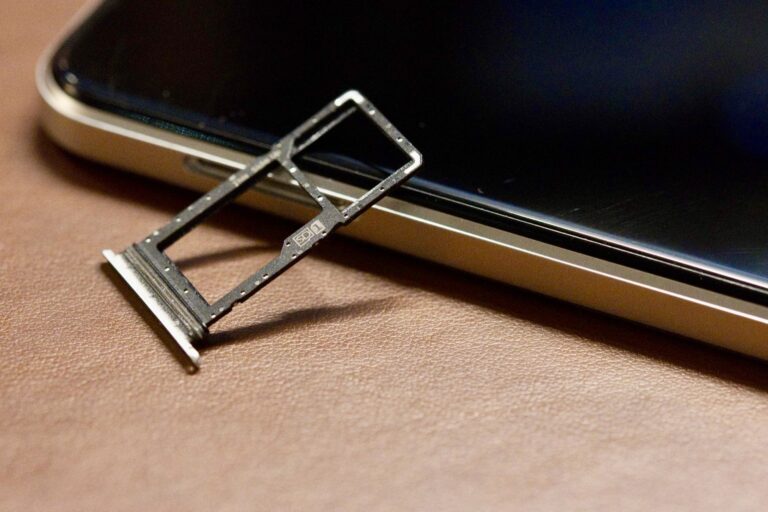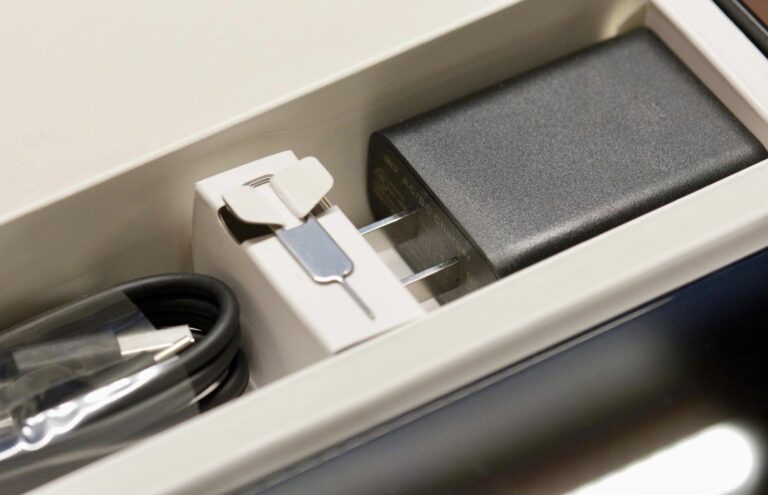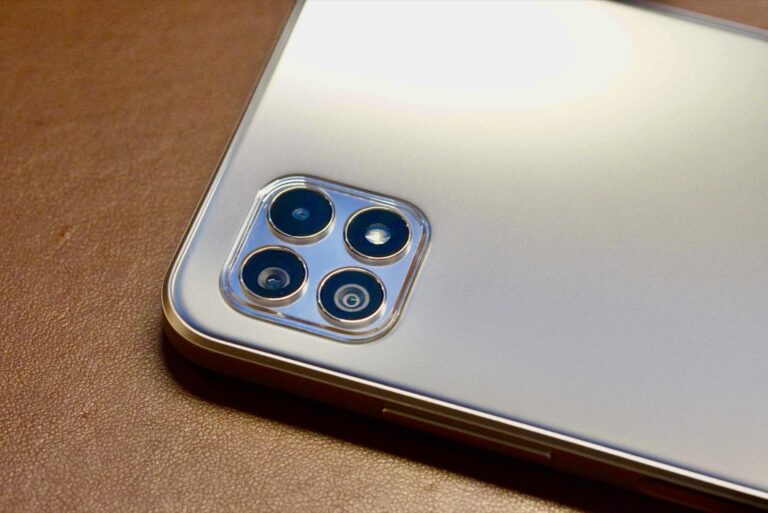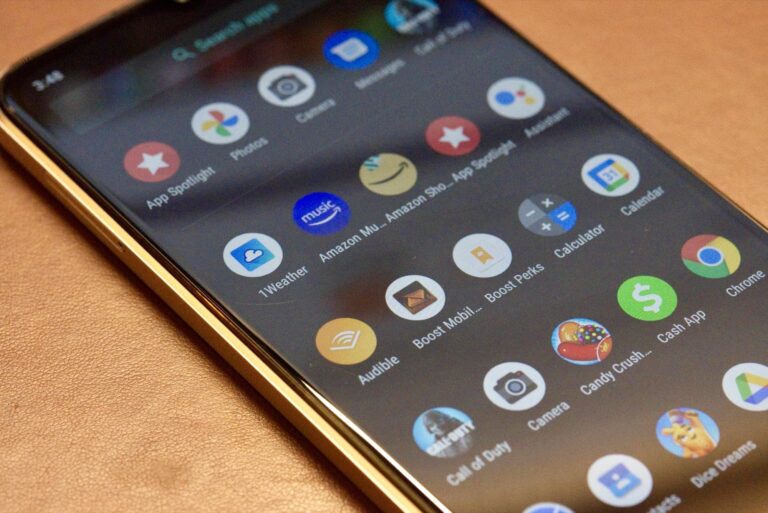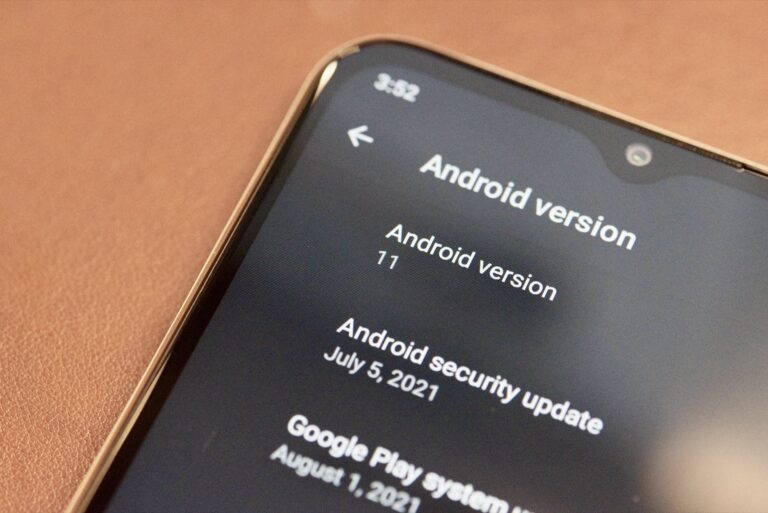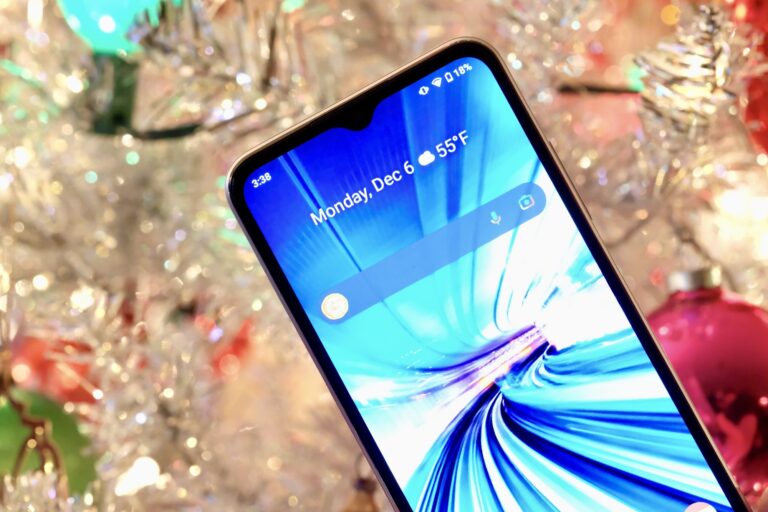While we dove into testing the Celero 5G with a bit of skepticism, we came away being delightfully surprised at just how good budget smartphones have become in recent years due to more advanced technology reducing in cost. We spent a week testing Boost Mobile’s Celero 5G. dedicating hours of hands-on time with the device to help you make your next purchase decision. If you are looking for an inexpensive upgrade, keep reading to learn how we fare with the Celero 5G, from its 6.5-inch HD+ display and triple-rear camera system, there’s a ton of features to test. The sides of the device are home to a power button/fingerprint scanner, a volume rocker switch, and a SIM card slot. On the bottom, you’ll find a single speaker, 3.5mm headphone jack, and USB-C charging port. The USB-C charging port is also a thrill to see. As more devices upgrade to USB-C, a common standard is created, so we won’t need to carry around multiple chargers for our different devices. Additionally, the inclusion of a headphone jack should make any wireless headphone holdouts quite happy. Turning the device over, you’ll find a gray pseudo-metallic styled back with the camera array in the upper right corner and a subdued Celero 5G logo near the bottom center. When it comes to weight, the device came in at 7.3 ounces on our scale, which is quite light for a device with such a large display. This low weight is likely due to the plastic construction. It is up to you to decide if the use of plastic is worth the reduction in weight. In our opinion, we think the Celero 5G balances well between materials and overall heft. Larger displays such as the one on the Celero 5G can make tasks such as watching videos and playing video games more enjoyable. We enjoyed spending some time playing Call of Duty Mobile without having to squint at the display or cramp his fingers hitting the on-screen controls. The Celero 5G display is quite competitive with other options at the same price, offering an HD+ resolution at 60Hz. We never felt that the display was grainy or pixelated during use, and it displayed bright, vivid colors when viewing multimedia content. That 60Hz display we mentioned is standard for a smartphone in this category. While more expensive phones have begun shifting to 90Hz+ displays, allowing for on-screen animations to appear smoother, this feature has yet to trickle down to devices of this price. While gamers might find an advantage with faster displays, the one on the Celero 5G isn’t a hindrance, and we believe most users won’t notice the absence. Take note that one of our favorite features, tap to wake, is disabled out of the box, so if you want your device to turn on automatically when the display is touched, you’ll need to enable it in Settings. Still, the Mediatek processor is enough when it comes to using everyday apps. If you’re someone who enjoys checking your email, browsing social media, taking photos, and surfing the web, the Mediatek processor will be enough to power your day. We started seeing Mediatek’s weak point in video games such as Call of Duty Mobile, where we found ourselves turning graphics down to the low-medium range. If you are a gamer, we aren’t saying that the Celero 5G is a no-go, but do understand that you are unlikely to play video games on their highest graphical settings. Paired with the Mediatek processor is 4GB of memory (RAM), which these days is a bare-bottom requirement for Android devices—anything less and performance suffers. We didn’t have any issues running multiple apps at once, which is one of the general functions that memory has a direct effect. However, it may also help to close unused apps as you use them throughout the day to free up more memory. When it comes to storage, the Celero5G includes 64GB internally, which is relatively small, especially if you are a shutterbug and enjoy taking photos. While we are under the hood, we should mention the namesake of the Celero 5G—the integrated 5G cellular capability. The 5G standard is the latest improvement to cellular networks—including Boost Mobile’s 5G network—, allowing users to download content faster than ever before and play video games with reduced latency. Other standards on board include Wi-Fi for fast connectivity anywhere a Wi-Fi hotspot is available, as well as Bluetooth 5.1 for connecting wireless headphones and accessories. Fortunately, the Celero 5G includes a sizable 4,000mAh battery which Boost Mobile advertises as being able to last for up to 45-hours of talk-time. Our testing found that the Celero 5G didn’t have any issues lasting through an entire day. Depending on how intensive your daily tasks are with the device, your mileage may vary. For example, someone who only uses their smartphone occasionally is likely to experience longer battery life than another individual who uses the Celero 5G for gaming. We are happy to see Boost Mobile including a 15W fast-charger in the box, allowing the Celero 5G to charge back up quickly so that you aren’t tethered to an outlet. You won’t find one thing on the Celero 5G is wireless charging, which is understandable at this price point but still disappointing. Luckily, you can discover USB-C wireless charging adapters online for cheap if needed. Despite the triple camera name, there are really only two usable cameras on the rear of the device, a 16MP standard angle lens, and a 5MP ultrawide lens. The last camera is a 2MP depth camera and is used to assist focusing. For testing, we took the device to upstate New York before the autumn foliage disappeared. We found the cameras to perform decently, providing surprises as well as disappointments. In an ideal well-lit environment, the Celero 5G takes photos that are perfectly suitable for capturing memories or showing off your day on Instagram with a bit of flare. Seriously, with a bit of sun, the photos from the Celero 5G were quite nice with a more vivid, contrasty look by default. The ability to switch between a standard lens and an ultrawide lens, for photographing in physically tight situations, was welcomed. Unfortunately, not everywhere is a well-lit environment, and this is where the camera system began to struggle. We found the Celero 5G to have poor dynamic range, struggling with situations in which part of the frame was well-lit and the other was in shadows. Additionally, the Celero 5G applied heavy noise reduction to photos taken in darker environments, such as a bar or outdoors in the evening, resulting in photographs that were poorly lit and blurry. Switching to the front-facing camera, the situation is about the same. We could get a few decent selfies in well-lit areas and the 8MP camera worked well for video calls, but we wouldn’t push it much beyond that. Video can be taken on the Celero 5G up to 2K resolution but is defaulted to 1080p HD. We found video performance to be below average compared to other phones in this price range, further highlighting many of the issues we had with still imagery. If you’re a lover of photography, the Celero 5G likely isn’t the choice for you, but most devices in the same price range deliver equivalent performance. Truly superb cameras are sadly still locked to more high-end devices, which will burn a deeper hole in your pocket than the Celero 5G. If you need to snap a few shots here and there, and the environments aren’t too darkly lit, you’ll be okay. But, don’t expect to push this camera and get great results. From an Android perspective, we don’t see a lot of the ‘skinning’ that we typically see. This is a process in which a manufacturer comes in and redesigns the overall look and feel of Android for one reason or another. The result of Boost Mobile leaving the majority of Android alone is a clean and efficient user interface that doesn’t feel bogged down with gimmicks or unnecessary additions. However, out of the box, the Celero 5G is bloated with preinstalled applications. Generally speaking, a manufacturer will preinstall applications to provide users with additional features. However, in other cases, apps will be preinstalled as part of a deal to help lower the overall price of the smartphone. Some preinstalled Boost Mobile apps, such as Boost Perks, My Boost, Secure Wi-Fi, and Voicemail, aren’t as much of an annoyance as they can be useful. However, a collection of unwanted apps are found on the Celero 5G, including: We understand that as part of the device’s low pricing, Boost Mobile may have had to partner with the above applications, but we wish they were a bit more selective and restrained. At the time of this review, Boost Mobile is offering the Celero 5G for only $139.99, and the promotion includes a free smartphone case while supplies last. We suspect one of the primary reasons for the launch of the Celero 5G is to provide an affordable option for customers still using Boost Mobile’s older 3G network that will soon be discontinued. Boost Mobile could have opted to produce an extremely cheap smartphone with 5G connectivity, but instead, they took the time to launch a smartphone that is quite a steal for the price. The Celero 5G is perfect for anyone seeking out a modern smartphone that can handle everyday tasks such as snapping photos, checking email, browsing social media, and surfing the web. Those who might want to look elsewhere include intense video gamers and individuals interested in higher-end photography. That being said, at its price, the Celero 5G delivers, and snagging a smartphone with a faster processor and a better camera system will require you to shell out more cash. If you’re looking for an affordable upgrade with 5G cellular connectivity, we are confident in saying that the Boost Mobile Celero 5G is a solid option.
Overall design and packaging Display size and performance Internal processor, memory, and storage Battery life and charging technology Cameras and video hardware Software and included features Pricing and availability
Our week-long hands-on testing with the Celero 5G took our review beyond specs on paper, showcasing how the device actually functioned when used. This methodology ensures that the review we have delivered to you is authentic and accurate, allowing you to make a more confident buying decision.



